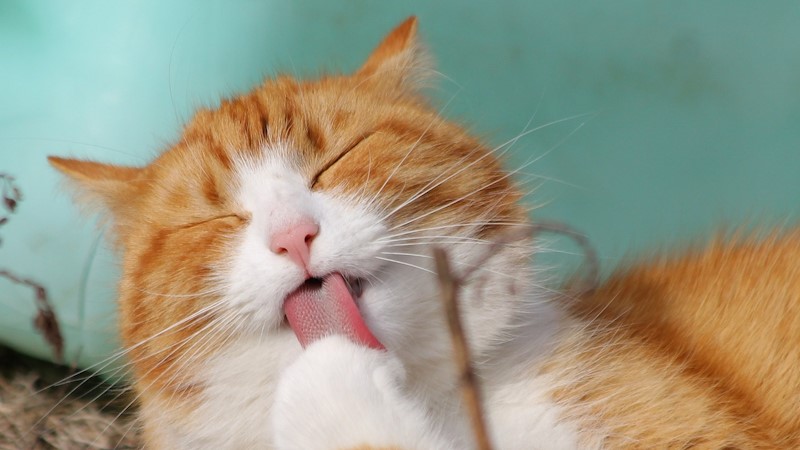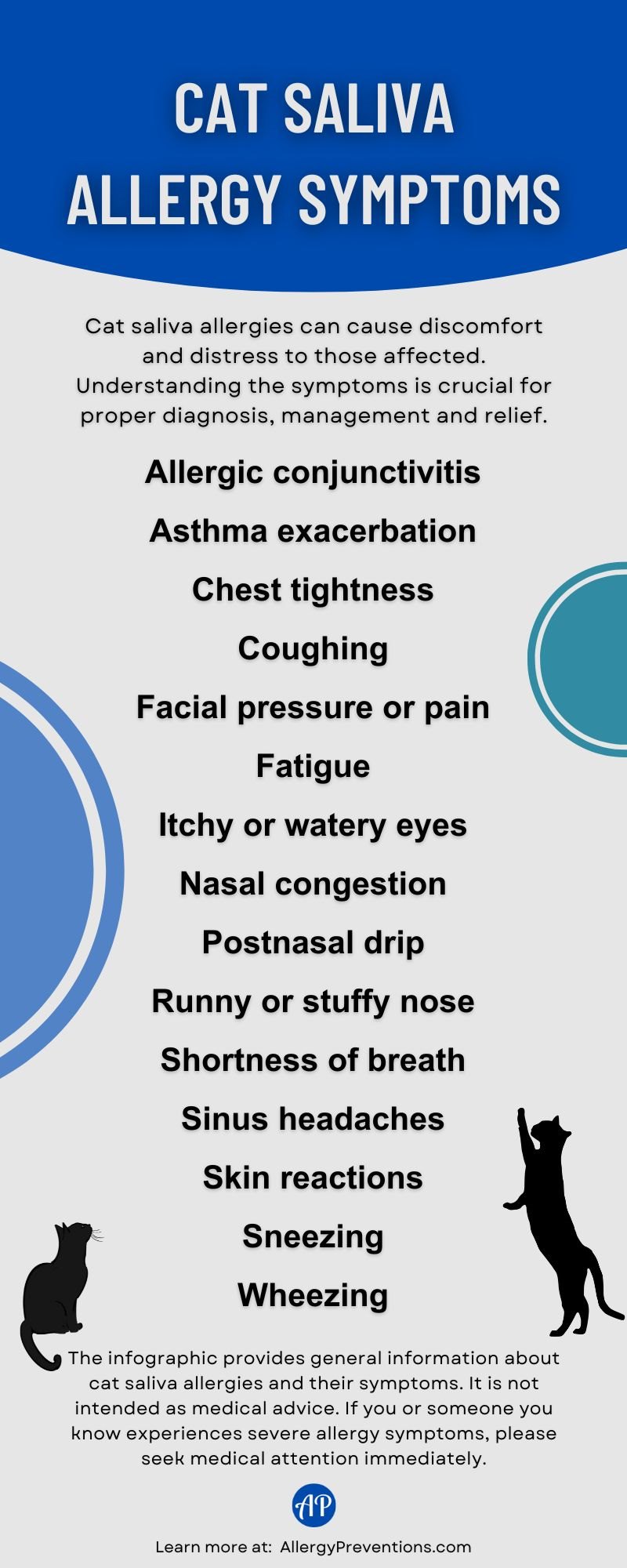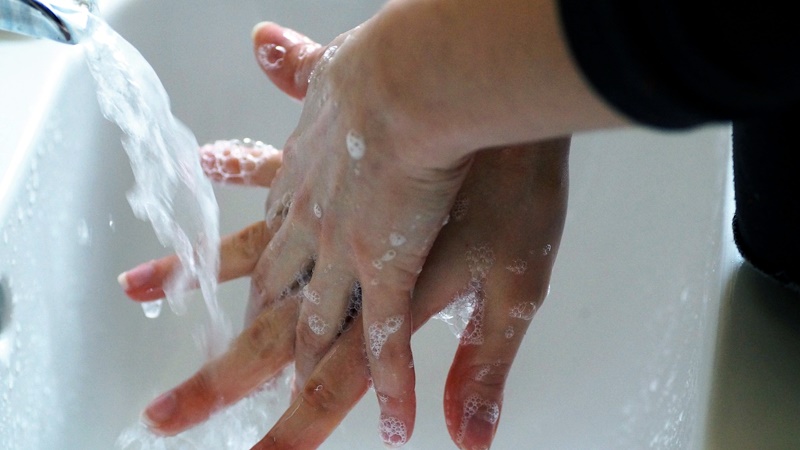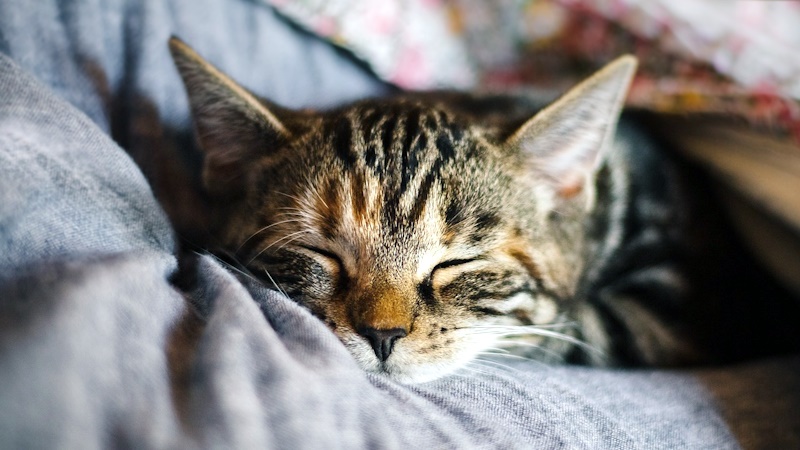Cats are popular pets around the world, cherished for their companionship and playful nature. However, some individuals may experience allergic reactions when exposed to cats. While most cat allergies are commonly associated with cat dander or fur, some people may develop a cat saliva allergy. In this article, we will explore the causes, symptoms, and treatment options for cat saliva allergies.

Table of Contents
Can you have a cat saliva allergy?
Yes, it is possible to be allergic to cat saliva. Cat allergies are a type of pet allergy that is commonly associated with the proteins found in cat dander, urine, and saliva. When cats groom themselves, they spread saliva on their fur, which then dries and becomes airborne. When individuals with cat allergies come into contact with these allergens, they may experience allergic reactions.
How common is a cat allergy?

Cat allergies are very common, and it is estimated that 1 in 5 adults are affected by cat allergy symptoms. The European Academy of Allergy and Clinical Immunology also has stated that cat allergies are one of the most common animal-origin allergies on the planet.
Causes of Cat Saliva Allergies

A cat saliva allergy is a pet-related allergy caused by your immune system overreacting to proteins found in a cat’s saliva, urine, or dander (dead skin flakes). These proteins are small and lightweight, easily becoming airborne and spreading throughout the environment.

When a person with a cat saliva allergy comes into contact with these allergens, their immune system perceives them as harmful substances and produces an allergic reaction. The immune system releases chemicals, such as histamine, to combat the perceived threat, leading to the symptoms associated with a cat saliva allergy.

It’s important to note that the allergens are not limited to the saliva itself but can also be present in other bodily fluids and dander. Cats groom themselves by licking their fur, and this grooming behavior spreads saliva and dander onto their fur. When cats shed their fur or groom themselves, these allergens become airborne and can settle on surfaces such as furniture, carpets, and clothing.
Symptoms of Cat Saliva Allergies

When someone is allergic to cat saliva, they may experience a range of symptoms, including:
- Allergic conjunctivitis: Inflammation of the conjunctiva (the clear tissue covering the front of the eye and lining the inner eyelids).
- Asthma exacerbation: Cat saliva allergies can trigger or worsen asthma symptoms, including coughing, wheezing, and difficulty breathing.
- Chest tightness: Discomfort or pressure in the chest area.
- Coughing: Frequent or persistent allergy cough, often accompanied by a tickling sensation in the throat.
- Facial pressure or pain: A feeling of pressure or pain in the face, particularly around the sinuses.
- Fatigue: Feeling excessively tired or experiencing a lack of energy, possibly due to the immune system response.
- Itchy or watery eyes: Persistent itching or watering of the eyes, redness, and sensitivity to light.
- Nasal congestion: Feeling of blockage or stuffiness in the nasal passages.
- Postnasal drip: Dripping of mucus from the back of the nose down the throat, leading to throat irritation, coughing, or a sore throat.
- Runny or stuffy nose: Excessive nasal discharge or congestion that may be clear or accompanied by mucus.
- Shortness of breath: Difficulty breathing, chest tightness, or a feeling of breathlessness.
- Sinus headaches: Headaches are often accompanied by pressure and pain around the sinuses.
- Skin reactions: Itchy skin, hives (raised, itchy welts on the skin), or a rash that may appear upon contact with cat allergens.
- Sneezing: Frequent bouts of sneezing, especially when in close proximity to cats or areas with cat allergens.
- Wheezing: High-pitched whistling sound when breathing, indicating narrowing of the airways.
Please note that this is an alphabetical ordering of the symptoms and does not indicate their severity or significance.
Diagnosing Cat Saliva Allergies

If you suspect that you have a cat saliva allergy, it is essential to consult with an allergist or immunologist. They will perform a comprehensive evaluation, which may involve a physical examination, reviewing your medical history, and conducting allergy tests. Allergy tests can include skin prick tests or blood tests to identify specific allergens, including cat saliva.
Medical History
The healthcare provider will begin by taking a detailed medical history, including a discussion of your symptoms and any suspected triggers. They will ask about your exposure to cats and inquire about the specific symptoms you experience when in contact with cats or areas with cat allergens.
Physical Examination
A physical examination may be conducted to assess any visible signs of allergic reactions, such as skin rash or respiratory distress. The doctor may also examine your nasal passages, eyes, and throat.
Allergy Testing

Allergy testing is one of the best ways to know if you have a cat saliva allergy. Allergy testing usually consists of a skin prick test or a simple blood test. I have had both of these tests completed, they are not bad. The benefits of knowing what you are allergic to outweigh any discomfort you may experience.
Skin Prick Test
This test involves applying small amounts of cat allergens, including cat saliva extracts, onto your skin, usually on the forearm or back. The skin is then gently pricked with a needle to allow the allergens to penetrate the skin’s surface. If you are allergic to cat saliva, you may develop a small raised bump or a red, itchy wheal at the site of the allergen. Skin prick testing is considered safe and provides quick results.
Blood Test
In some cases, a blood test called a specific IgE (Immunoglobulin E) test may be conducted. The test measures the levels of IgE antibodies specific to cat allergens in your blood. Elevated levels of these antibodies indicate an allergic response to cat saliva. Blood tests are especially useful if skin testing cannot be performed due to certain medications, skin conditions, or other factors.
Cat Avoidance & Challenge Test

In situations where the diagnosis is uncertain, avoiding cats for a specific amount of time may assist in diagnosing a cat allergy. During this avoidance period, you and your doctor will observe and document if your allergy symptoms are improving. If your symptoms are resolved by avoiding cats, then chances are you have a cat allergy.
Subsequently, a controlled exposure or challenge is conducted to assess whether the symptoms recur upon reintroduction of cat allergens. You will be introduced to cat allergens, and if you have a reaction in this controlled environment, you most likely have a cat allergy.
Symptom Diary

Keeping a symptom diary can be helpful in tracking and documenting your symptoms, including their frequency, severity, and duration. This information can assist in identifying patterns and potential triggers, aiding in the diagnosis process.
It’s important to note that a proper diagnosis should be made by a qualified healthcare professional. They will consider your medical history, physical examination findings, and the results of allergy testing to accurately diagnose cat saliva allergies and provide appropriate guidance on managing your symptoms.
Treating & Managing Cat Saliva Allergies

Managing a cat saliva allergy involves a combination of strategies aimed at reducing exposure to cat allergens and alleviating symptoms. Avoidance, medication, personal care, and working with your doctor are several approaches to managing a cat saliva allergy.
Avoidance of Cat Allergens
- Minimize contact with cats: If possible, avoid direct contact with cats, especially if you know you have a cat saliva allergy. This includes not allowing cats into your living space or bedroom.
- Create cat-free zones: Designate certain areas of your home as cat-free zones, where cats are not allowed to enter. This can help reduce the concentration of allergens in those areas.
- Regular cleaning: Clean your home thoroughly and regularly to minimize the presence of cat allergens. Use a vacuum cleaner equipped with a high-efficiency particulate air (HEPA) filter to trap allergens effectively.
- Wash bedding and soft furnishings: Wash bedding, curtains, and other soft furnishings frequently in hot water to remove allergens.
- Clean the cat’s living space: If you have a cat, it’s important to clean their living space regularly. This includes washing their bedding, vacuuming areas where they spend time, and using air purifiers or filters to reduce allergen levels.
Medications

- Antihistamines: Over-the-counter or prescription antihistamines can help relieve symptoms such as sneezing, itching, and runny nose.
- Nasal corticosteroids: These prescription nasal sprays help reduce inflammation in the nasal passages, alleviating congestion and other nasal symptoms.
- Decongestants: Oral decongestants or nasal sprays can temporarily relieve nasal congestion, but they should be used cautiously and for short periods due to potential side effects.
- Eye drops: Over-the-counter or prescription eye drops can provide relief for itchy, watery eyes caused by cat saliva allergies.
- Allergy shots (immunotherapy): In cases of severe or persistent allergies, allergen immunotherapy may be recommended. This involves receiving regular injections of small amounts of cat allergens over time to desensitize the immune system.
Personal Care

Personal care practices, such as hand washing, can play a significant role in managing cat saliva allergies and reducing allergic reactions. Additionally, try to avoid touching your face, and consider using barriers when you are around cats.
- Avoid touching your face: Try to avoid touching your face, particularly your eyes, nose, and mouth, as this can introduce allergens and trigger symptoms.
- Use barrier methods: Consider wearing a mask, gloves, or long-sleeved clothing when cleaning or coming into contact with cat allergens to minimize exposure.
- Wash hands and face: After being in contact with cats or areas with cat allergens, wash your hands and face thoroughly to remove allergens from your skin and reduce the risk of transferring them to your eyes or nose.
Prevention and Lifestyle Changes

To reduce the risk of cat saliva allergies, consider the following preventive measures and lifestyle changes:
- Choose hypoallergenic breeds: Some cat breeds are known to produce fewer allergenic proteins and may be better suited for individuals with a cat saliva allergy. If you want to avoid cats altogether, consider a hypoallergenic pet.
- Create an allergy-friendly environment: Use allergen-proof covers for mattresses and pillows, regularly wash bedding in hot water, and keep your home clean and well-ventilated.
- Consult an allergist before getting a cat: If you’re considering getting a cat but have a known history of allergies, consult with an allergist to discuss strategies for managing potential allergies.
Conclusion
Cat saliva allergies can present challenges for individuals who adore cats but experience allergic reactions. By understanding the causes, symptoms, and available treatment options, it becomes possible to manage and mitigate the impact of cat saliva allergies. Whether through preventive measures, lifestyle changes, or medical interventions, individuals can still find ways to enjoy the company of cats while minimizing allergic reactions.
Cat Saliva Allergy FAQs
How do you know if you’re allergic to cat saliva?
If you suspect a cat saliva allergy, watch for respiratory symptoms like sneezing and congestion, skin reactions, itchy or watery eyes, coughing, and wheezing when in contact with cats. Other general allergy-like symptoms such as fatigue and headache might also be present.
Why am I suddenly allergic to my cat?
Experiencing sudden allergies to your cat can occur due to increased exposure to cat allergens, age and genetics, immune system fluctuations, underlying health conditions, and/or seasonal factors.
Can cat saliva allergies develop over time?
Yes, a cat saliva allergy can develop over time, even if you have previously had no issues with cats or other allergens. Allergies can develop or change at any age, and exposure to cats can trigger an allergic response.
Are certain cat breeds less likely to cause allergies?
Some cat breeds, such as Siberian, Balinese, and Russian Blue, are known to produce fewer allergenic proteins. However, it’s important to note that individual reactions can still vary, and some individuals may still experience allergies, even with these breeds.
Can cat saliva allergies be outgrown?
While some allergies may fade or diminish over time, it is uncommon for a cat saliva allergy to be outgrown. It’s best to consult with an allergist for personalized advice on managing cat allergies.

